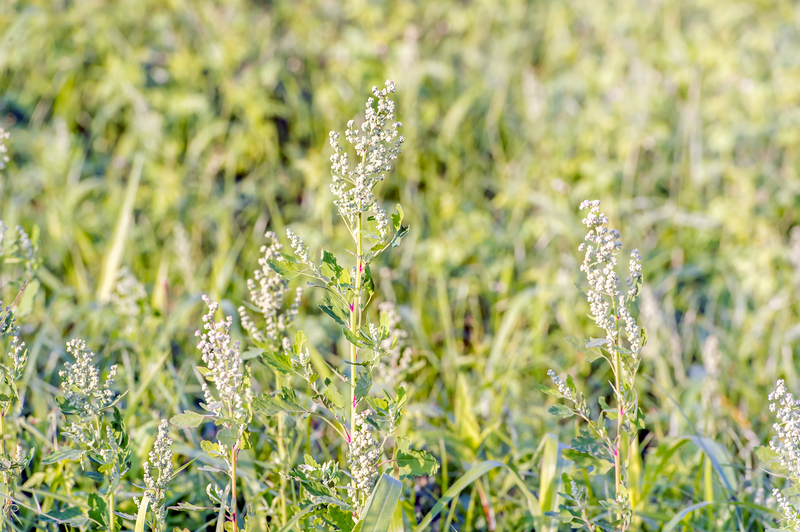Garden Wisdom: 9 Tips to Cultivate a Green Oasis for Beginners
Posted on 18/06/2025
Garden Wisdom: 9 Tips to Cultivate a Green Oasis for Beginners
Would you like to transform your backyard or balcony into a lush, thriving haven? Embarking on your very first gardening journey can feel daunting, but with the right garden wisdom, anyone can nurture a flourishing green oasis--even beginners! This comprehensive guide shares practical advice, essential steps, and time-tested tips to help any novice create a beautiful, healthy garden.
Why Create a Green Oasis?
A green oasis is more than just a visual treat--it's a sanctuary where you can relax, recharge, and connect with nature. From improving air quality to enhancing your mental well-being, gardens offer numerous benefits. Whether you have a sprawling lawn, a compact patio, or a sunny windowsill, nurturing plants brings joy and vitality into your daily life.


Contents
- Understand Your Space
- Select the Right Plants
- Prepare Nourishing Soil
- Master the Art of Watering
- Harness Sunlight Properly
- Plant by the Season
- Plan a Garden Layout
- Tackle Pests and Problems
- Practice Consistency and Patience
Tip 1: Understand Your Growing Space
Garden wisdom starts with observation. Take time to study your garden area before purchasing any plants or tools. Is your space a sunny balcony, a shaded corner, or an open backyard? What type of soil do you have--clay, sand, loam? How much rainfall does your region experience?
- Sun Exposure: Map how sunlight moves over your space throughout the day. Most edible and flowering plants need at least 6 hours of sunlight.
- Soil Type: Grab a handful of your soil and squeeze it. Sandy soil falls apart, while clay molds tightly. Loamy soil is ideal--crumbly and rich.
- Space Constraints: Urban gardeners can use pots, vertical gardens, or railings. Even small windowsills can support a collection of herbs or succulents.
Pro Tip:
Mistakes come from acting too quickly. Take the time to understand your unique environment before making purchases.
Tip 2: Select the Right Plants for Beginners
Not all plants thrive in every condition. For a successful beginner's garden oasis, pick resilient, low-maintenance varieties that suit your location. Consider the following guidelines:
- Climate: Research which plants are native or well-adapted to your local growing region.
- Sun Needs: Shade-loving ferns or hostas, versus sun-seeking tomatoes or lavender.
- Purpose: Do you want to grow edibles, flowers, or evergreens? Herbs like basil and mint, or succulents like jade plant, are excellent for beginners.
Garden Wisdom for Beginners:
Start small--focus on three to five different plant species until you gain confidence. Gradually diversify as you learn their needs.
Tip 3: Feed Your Garden with the Perfect Soil
Any thriving green retreat is rooted in fertile, healthy soil. The right soil provides all the nutrients and structure plants need to grow strong. Here's how you can enhance your soil:
- Amend with Compost: Blend kitchen scraps, manure, teas, and leaf mold to create nutrient-rich organic matter.
- Test Soil pH: Most plants prefer a neutral pH (6.0-7.0). Home test kits are affordable and easy to use.
- Mulch: Top-dress your soil with wood chips, straw, or dried grass to conserve moisture and suppress weeds.
Remember: Healthy soil equals healthy plants. Building your soil now pays off for seasons to come.
Tip 4: Master the Art of Watering
Watering can make or break any green oasis, especially for novice gardeners. Both under- and over-watering are common mistakes. Apply these watering tips for gardening beginners:
- Water Deeply, Not Frequently: Water less often but thoroughly so roots grow deep and strong.
- Time is Key: Early morning is the best time to water, reducing evaporation and disease risk.
- Check Moisture: Stick your finger or a wooden skewer into the soil. If it feels dry two inches below, it's time to water.
- Container Gardens: Potted plants dry out faster than ground beds and may need more frequent checks.
Bonus Garden Oasis Wisdom:
Use a watering can with a rose nozzle for gentle, even distribution to seedlings and delicate flowers.
Tip 5: Make the Most of Sunlight
Sunlight is the lifeblood of plant life. Position your plants where they will receive optimal light, which is essential for growth and flowering.
- Track Light Patterns: Observe how much direct or dappled sunlight different areas receive throughout the day.
- Choose Plant Locations Carefully: Place sun-loving species in open areas and shade-tolerant ones under trees or awnings.
- Rotate Pots: If you're growing in containers, rotate every week for even exposure and balanced growth.
Remember: The right light can transform your gardening success.
Tip 6: Sow and Grow by the Season
**Garden wisdom for beginners is rooted in seasonal awareness.** Knowing when to plant, transplant, and harvest ensures the best results. Check your region's planting calendar or seed packet instructions for guidance.
- Spring: Ideal for a wide range of veggies, annuals, and perennials.
- Summer: Focus on heat-loving plants like basil, tomatoes, and marigolds.
- Fall: Cool-season crops (spinach, kale) and bulbs (tulips, daffodils) shine now.
- Winter: Plan, clean, and care for year-round evergreens--or grow microgreens indoors.
Planting at the right time sets your garden up for resilience and lush beauty.
Tip 7: Design a Functional and Beautiful Garden Layout
Plant arrangement matters--for their health and your enjoyment. Even beginners can plan a pleasing, productive green space by following these practical tips:
- Mix Heights and Textures: Combine tall sunflowers with trailing nasturtiums or compact herbs for visual interest.
- Group by Watering Needs: Place thirstier plants together, so you avoid over- or under-watering different species.
- Allow Room for Growth: Space your plantings as recommended to avoid crowding and disease.
- Pathways and Access: Leave clear paths to easily reach all parts of your garden for care and harvesting.
An organized layout makes daily gardening easier and turns your outdoor area into a true oasis.
Tip 8: Be Proactive About Pests and Problems
Even the best-kept gardens encounter challenges. From nibbling bugs to fungal spots, proactive care is essential. Use these environmentally friendly wisdoms:
- Inspect Regularly: Check leaves and stems for spots, holes, or changes in color every few days.
- Encourage Beneficial Insects: Ladybugs and lacewings prey on common pests like aphids and mites.
- DIY Remedies: Use a mild soap spray for aphids or sprinkle diatomaceous earth for slugs and snails.
- Remove Sick Plants: Pull out diseased plants promptly to protect healthy ones.
Oasis Insight:
Most problems can be solved early with vigilance and natural solutions.
Tip 9: Embrace Consistency and Let Nature Take Time
Patience is a hallmark of every seasoned gardener. Plants need consistent care, but remember: growth happens at nature's pace. Try these final garden wisdoms:
- Devote a Few Minutes Daily: Check on your plants, water, and clear debris or weeds regularly.
- Keep a Journal: Track what works and what doesn't. Note sunshine, water, plant health, and pests.
- Celebrate Small Wins: Every new leaf or bloom is a reward for your efforts!
- Keep Learning: Gardening is full of discovery--join local groups, read books, or visit gardens for inspiration.
Your green oasis will thrive as you grow your gardening skills--even small, regular steps bring lasting success.
Cultivating Your First Garden Oasis: A Lasting Investment in Joy
Starting a garden as a beginner may seem intimidating, but with the right garden wisdom and a willingness to learn, anyone can create a personal green oasis. Remember: Observe your space, choose wisely, feed your soil, water with care, provide sunshine, plant in season, plan your layout, address issues early, and be patient.
Whether you're hoping for spectacular blooms, tasty herbs, or a tranquil escape, your journey will shape both your garden and you. Every seed sown deepens your connection to nature and brings you that much closer to a flourishing green retreat.
Happy Gardening!
If you found these garden wisdom tips helpful, share your own stories or questions in the comments below--and start your journey to gardening success today!

